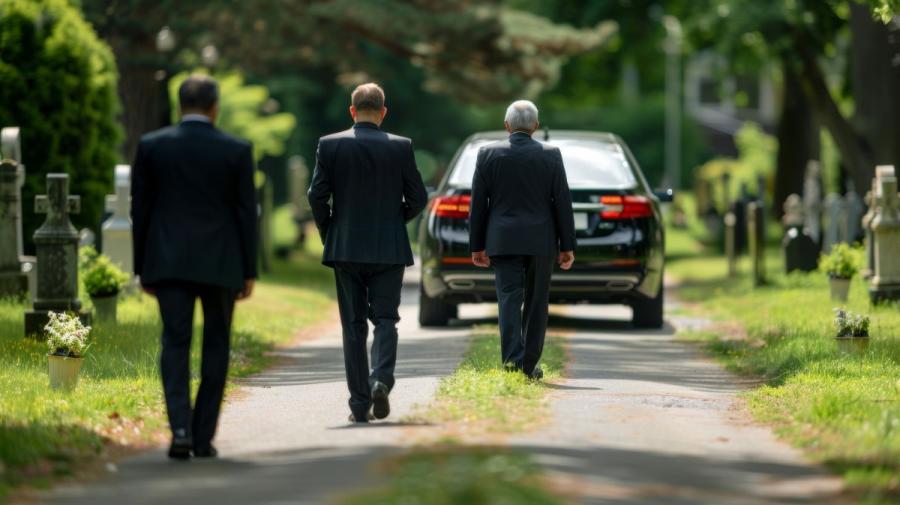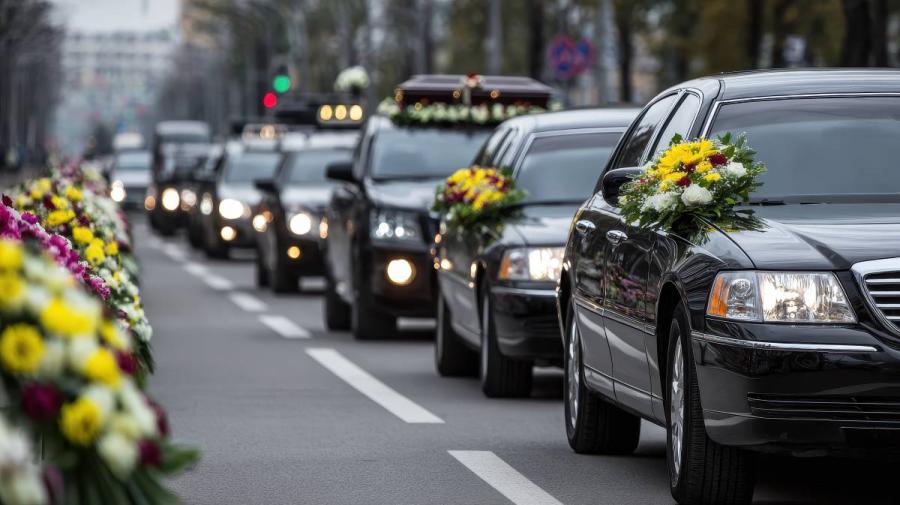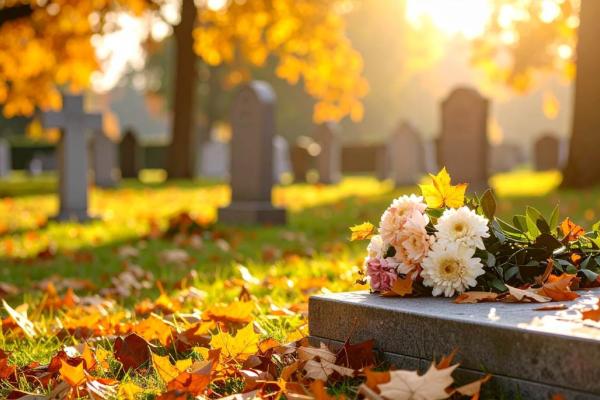
Funeral cortege: what it involves and what it symbolises
There are moments when gestures speak louder than words. The funeral cortege is one of them: a quiet way of accompanying and saying farewell to a loved one which, although familiar to many of us, is not always fully understood.
The funeral cortege gathers silence, footsteps and glances that hold the family at a delicate time. Certain gestures may go unnoticed and yet they shape the farewell. Pausing over those details helps us understand their meaning and live the moment with calm.
What is a funeral cortege?
A funeral cortege is the procession that accompanies the person who has died from the place of the ceremony or the funeral home to the final point of farewell (interment or cremation). More than a transfer, it is a ritual of accompaniment that allows family and friends to express respect, love and recognition for a life shared.
Typically, the cortege is led by the hearse, followed by accompanying vehicles or mourners on foot. In many cases, a measured pace and orderly formation are kept, which helps to create an atmosphere of reflection and tribute.

Who takes part in a funeral cortege?
Although every family can adapt it, a funeral cortege usually includes:
- Immediate family: those at the front, whether in vehicles or on foot, as a sign of closeness.
- Friends and other loved ones: they follow in an orderly way, reinforcing support and unity.
- Funeral professionals: they coordinate the route, ensure safety and maintain the solemnity of the moment.
- An officiant or spiritual/secular representative (if there is one): they may lead or participate at the beginning or end of the route.
However, there is no single “right” way. Each family can decide the degree of participation, the tone (more intimate or more open) and any symbolic elements they wish to include.
What happens during a funeral cortege?
The aim is to accompany and say farewell with respect. Depending on the family’s preferences, it may include:
- Short readings or words of remembrance at the beginning or end of the route.
- Meaningful music (in silence or very softly) that evokes the loved one’s memory.
- Flowers and symbolic details (small bouquets, remembrance ribbons, photographs), always taking care not to overwhelm the atmosphere.
There are also practical aspects to consider: coordinating the departure, choosing the route, informing attendees about the order of the cortege and basic road-safety guidelines.
If you’re not sure where to begin, this guide on procedures and practical advice when a family member dies will help.
If older people or those with reduced mobility will attend, it is worth planning accessibility, appointing someone to answer questions en route, and agreeing a simple final gesture (for example, a minute’s silence or a brief piece of music).
When a large turnout is expected, the funeral home can liaise with the local police to facilitate crossings and prevent incidents.
What is the route of a funeral cortege?
The route of the funeral cortege normally runs from the funeral home or place of the ceremony to the cemetery or crematorium. Sometimes the family requests a pass-by at a special place: the neighbourhood where the person grew up, a meaningful spot or the family home. Where possible and safe, the funeral team can assess alternatives and timings.
To help everything run smoothly:
- Define the starting point and destination in advance, plus any stops along the way.
- Tell attendees how the procession will be formed (order of vehicles or people on foot).
- Consider traffic and schedules to avoid delays.
- Keep it consistent with the ceremony: if it was intimate, a smaller cortege may be appropriate; if it was open, a larger column can be arranged.
That said, a long cortege isn’t compulsory; some families prefer a shorter journey focused on the final moment of farewell.
The symbolic meaning of a funeral cortege
Beyond logistics, the funeral cortege is an act of meaning. It symbolises:
- Accompaniment: moving forward together reaffirms the bond and helps ease the loneliness of grief.
- Social recognition: the community is present and acknowledges the importance of the life that has gone.
- Transition: the physical journey reflects a passage to a new state, both for the person being farewelled and for those who remain.
- Shared memory: it allows gestures, objects and songs to be woven in that connect with the family story.
This ritual also helps to bring emotional order to what has happened: it offers a framework, a sense of timing and a way to take part—something invaluable in moments of confusion and sadness.

If you are weighing up options and concerned about the financial impact of different services, you can find out more about funeral expenses and the factors that influence them. We understand this is a very difficult time, and having clear guidance can help.
Frequently asked questions about funeral corteges
Is permission needed to hold a funeral cortege?
In general, no specific permit is required when the cortege is conducted in vehicles and without extraordinary road closures. However, if you plan to walk stretches along public roads, stop in places that are not designated for this purpose, or organise a large procession that affects traffic, it is advisable to coordinate with the funeral home so they can consult the local council or relevant authority.
How long does a funeral cortege last?
Duration depends on distance, traffic and any symbolic stop. As a guideline, it usually lasts between 15 and 45 minutes for journeys within a town or city. If there are inter-urban routes or stops, the time will increase. To avoid unnecessary waiting, it helps to tell attendees the departure time and estimated arrival time.
Can a funeral cortege be personalised?
Yes. In fact, many families appreciate being able to personalise certain details (always with discretion and respect):
- Choosing meaningful music.
- Including flowers or a colour palette that evokes the person honoured.
- Setting a route with a brief symbolic stop.
- Inviting someone close to share a few words at the beginning or end.
Of course, a simple and intimate cortege is also an option if the family prefers.


